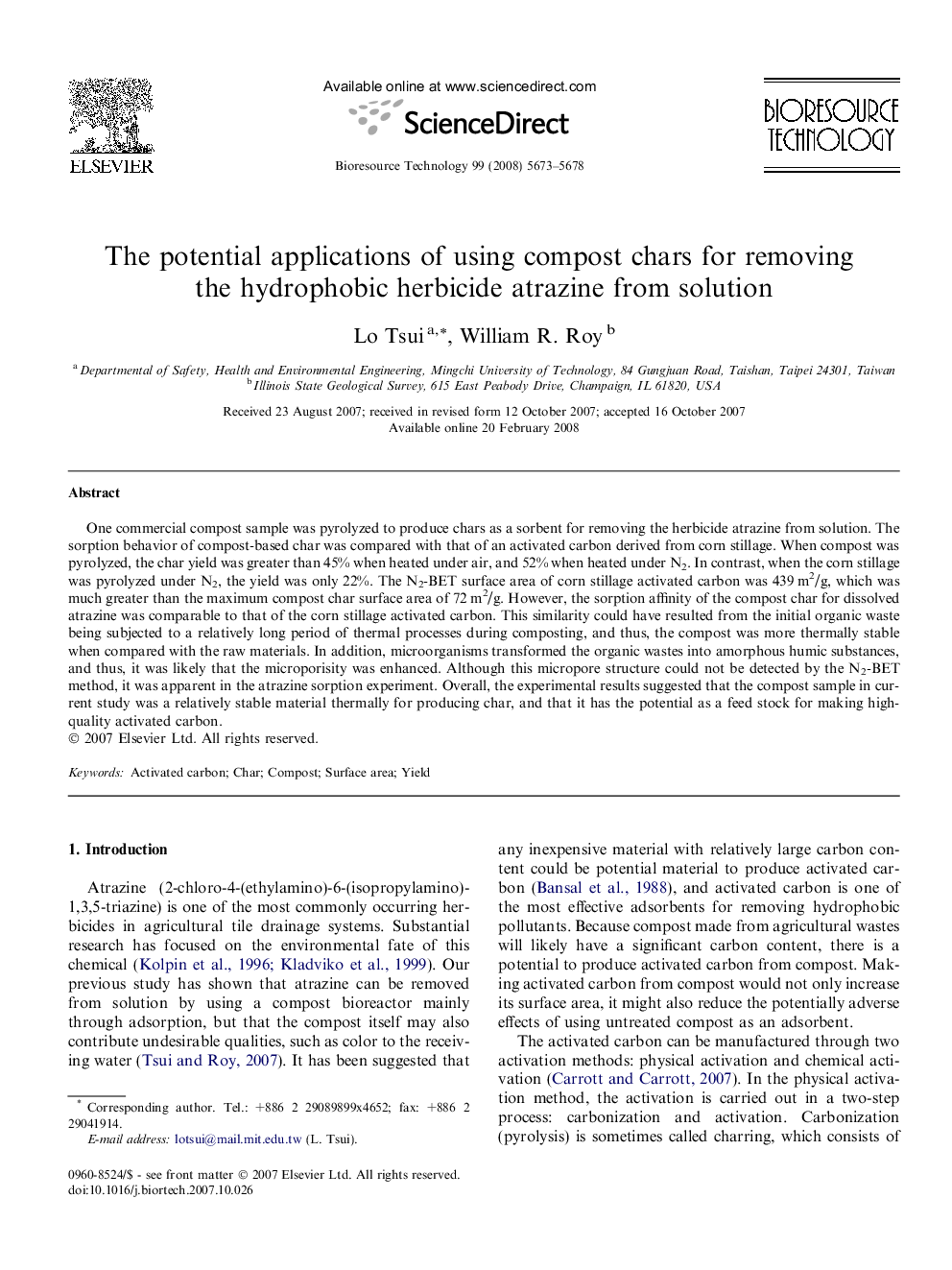| Article ID | Journal | Published Year | Pages | File Type |
|---|---|---|---|---|
| 685127 | Bioresource Technology | 2008 | 6 Pages |
One commercial compost sample was pyrolyzed to produce chars as a sorbent for removing the herbicide atrazine from solution. The sorption behavior of compost-based char was compared with that of an activated carbon derived from corn stillage. When compost was pyrolyzed, the char yield was greater than 45% when heated under air, and 52% when heated under N2. In contrast, when the corn stillage was pyrolyzed under N2, the yield was only 22%. The N2-BET surface area of corn stillage activated carbon was 439 m2/g, which was much greater than the maximum compost char surface area of 72 m2/g. However, the sorption affinity of the compost char for dissolved atrazine was comparable to that of the corn stillage activated carbon. This similarity could have resulted from the initial organic waste being subjected to a relatively long period of thermal processes during composting, and thus, the compost was more thermally stable when compared with the raw materials. In addition, microorganisms transformed the organic wastes into amorphous humic substances, and thus, it was likely that the microporisity was enhanced. Although this micropore structure could not be detected by the N2-BET method, it was apparent in the atrazine sorption experiment. Overall, the experimental results suggested that the compost sample in current study was a relatively stable material thermally for producing char, and that it has the potential as a feed stock for making high-quality activated carbon.
